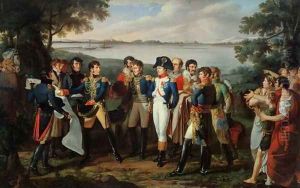Lodovico Venuti Paintings
Lodovico (or Ludovico) Venuti was an Italian antiquarian, archaeologist, and numismatist who made significant contributions to the study of ancient Roman culture and art during the 18th century. Born in Cortona, Tuscany, in 1695, Venuti came from a noble family and developed an early interest in classical antiquities and the history of his homeland.
Venuti's education and background provided him with the knowledge and skills necessary to undertake scholarly work in archaeology and ancient history. He was part of the intellectual circles that included prominent figures of the Enlightenment, who were engaged in the systematic study and interpretation of the past.
Throughout his career, Venuti was actively involved in the excavation and study of ancient sites. His work was particularly focused on Etruscan and Roman artifacts, and he contributed to the documentation and preservation of numerous artifacts from these cultures. He was known for his systematic approach to archaeology, at a time when the field was still in its infancy.
One of Venuti's most notable works was the 'Accurata e succinta descrizione topografica delle antichità di Roma' (Accurate and Brief Topographical Description of the Antiquities of Rome), first published in 1763. This work was a guide to the ancient monuments of Rome and was influential in the development of archaeology as a discipline. It provided detailed descriptions of the city's ancient architecture and artifacts, and it was used as a reference by scholars and travelers alike.
Venuti was also a member of various learned societies, and he played a role in the intellectual and cultural life of his time. He was involved with the Pontifical Academy of Archaeology and the Etruscan Academy of Cortona, among others.
Venuti's contributions to archaeology and his work on the antiquities of Rome and Tuscany were significant in the advancement of historical knowledge and the study of ancient civilizations. His work laid important groundwork for future generations of archaeologists and historians. He passed away in 1763, but his legacy continued to influence the disciplines of archaeology and numismatics for many years to come.
